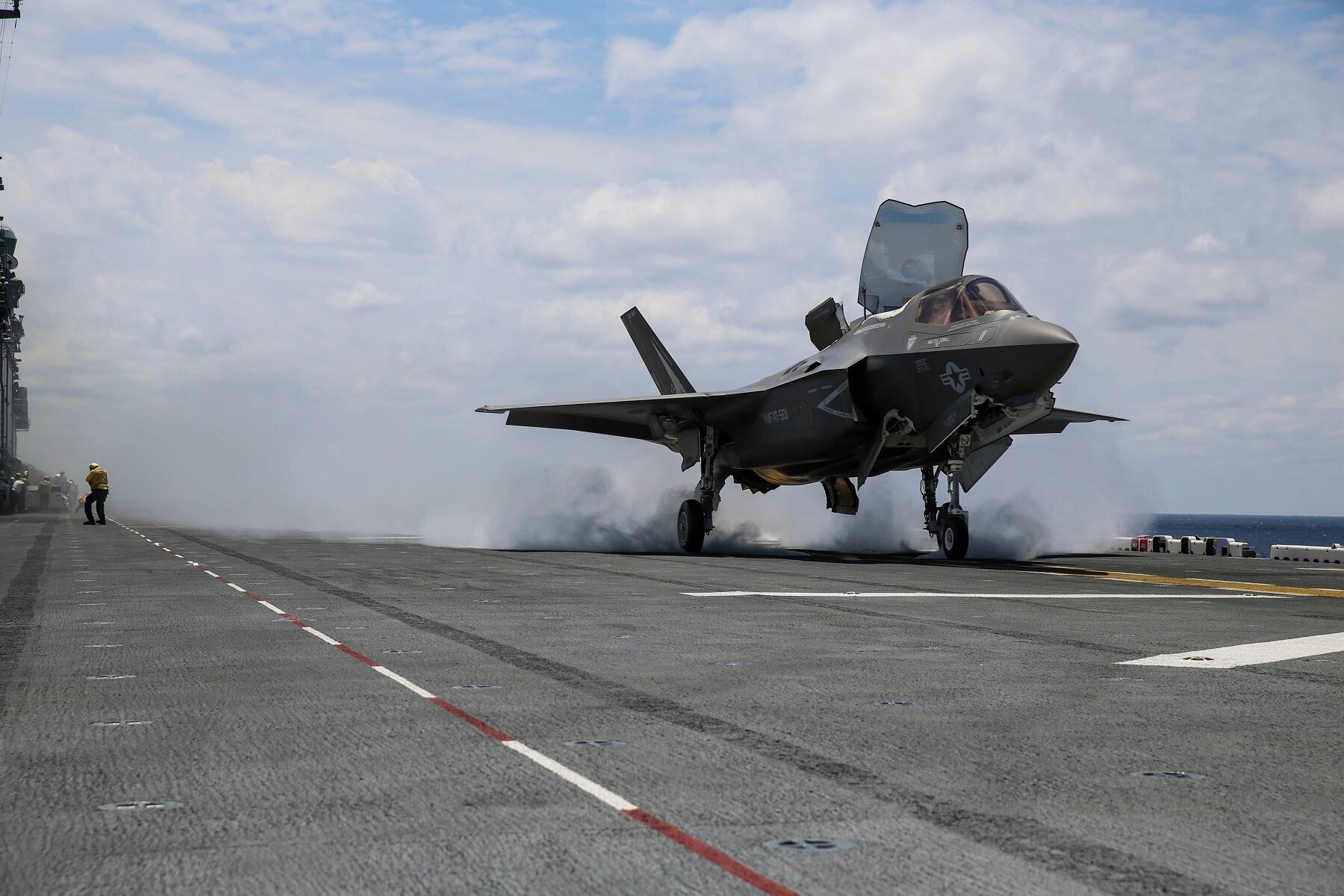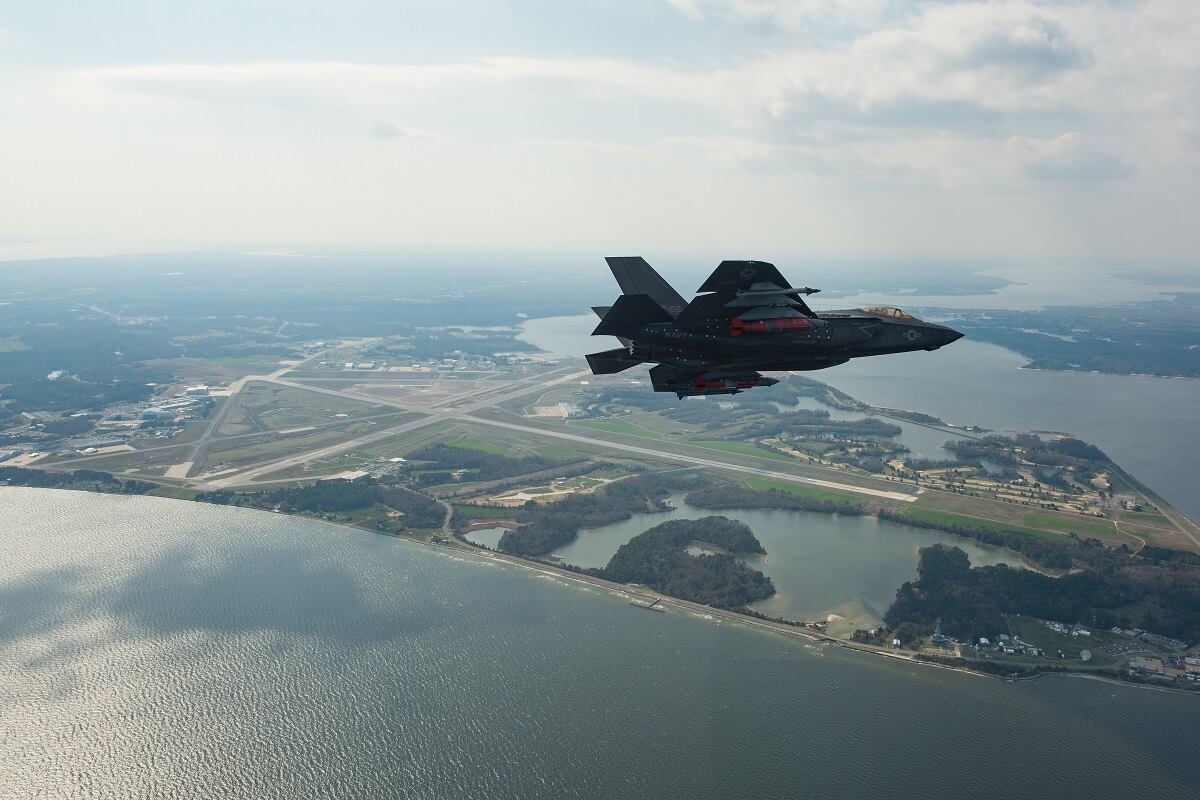WASHINGTON — The Pentagon’s acquisition executive is set to weigh in on the F-35’s modernization plan in the coming weeks, the F-35 program executive officer said Oct 1.
An update of the F-35’s acquisition strategy, which spells out the F-35’s Block 4 modernization plan and describes the agile software approach that the department intends to use to incrementally upgrade the jet, is sitting on the desk of Under Secretary of Defense for Acquisition and Sustainment Ellen Lord, Vice Adm. Mat Winter told reporters during a roundtable.
Winter characterized the document as going through the “final administrative engagements with her staff and the [Office of the Secretary of Defense] staff,” with Lord’s approval expected “within the next couple weeks,” he said.
The Navy and Air Force acquisition executives — James Geurts and Will Roper, respectively — have already approved the plan.
Although Winter did not provide details on the revised strategy, it is anticipated to contain new cost estimates for Block 4 modernization driven by the new agile software approach, which the F-35 joint program office terms Continuous Capability Development and Delivery or C2D2.
RELATED

The JPO has argued that, in order to keep the F-35 relevant against emerging, dynamic threats, it needs to be able to quickly field incremental updates to the joint strike fighter’s software.
“The challenge we have is to ensure that we can continue to deliver capability to our warfighter on an operationally relevant, technically feasible pace, and that pace needs to outpace our adversaries and potential threats on the battlefield,” Winter said Monday.
This more intensive software development effort may also boost the cost of follow-on modernization. During a March hearing, Winter acknowledged that U.S. and international customers could pay up to $16 billion for Block 4 modernization — a figure that includes $10.8 billion for development and $5.4 billion for procurement of upgrades to the F-35 between fiscal years 2018 through 2024.
However, he also stressed that this was an initial estimate, and that a more solid assessment would be provided to Lord with the revised acquisition strategy.
By contrast, the Government Accountability Office in 2017 predicted that the development phase of the Block 4 modernization effort would cost upwards of $3.9 billion, but that figure only included up to FY22 and did not include procurement costs.
The program office has laid out a total of 53 capabilities to be included in Block 4, which range from updated software to a suite of new weapons like the Small Diameter Bomb II.
RELATED

The first Block 4 capabilities are set to be delivered in April, Winter said, but about 22 modifications will require the F-35 to undergo a set of computing system upgrades called Tech Refresh 3. Those “TR 3” modifications include a new integrated core processor, memory system and panoramic cockpit display.
The Air Force, Navy and Marine Corps currently plan to upgrade all of their F-35s to TR3 in the 2020s, although that could change due to operational or fiscal constraints, Winter noted.
It is still unknown whether all operational F-35s will be converted to the Block 4 version, but that decision could also affect the cost of the follow-on modernization program.
The program office is also gearing up to start initial operational test and evaluation, now slated for mid-November, Winter said. JPO officials are set to meet with Lord’s office on Oct. 2 for the operational test readiness review, which will assess the F-35 system, the resources needed to execute IOT&E and the requirements to start testing.
Once operational test has been completed, Lord will be able to make a full rate production decision, which is projected for end of 2019, he said.
Valerie Insinna is Defense News' air warfare reporter. She previously worked the Navy/congressional beats for Defense Daily, which followed almost three years as a staff writer for National Defense Magazine. Prior to that, she worked as an editorial assistant for the Tokyo Shimbun’s Washington bureau.








